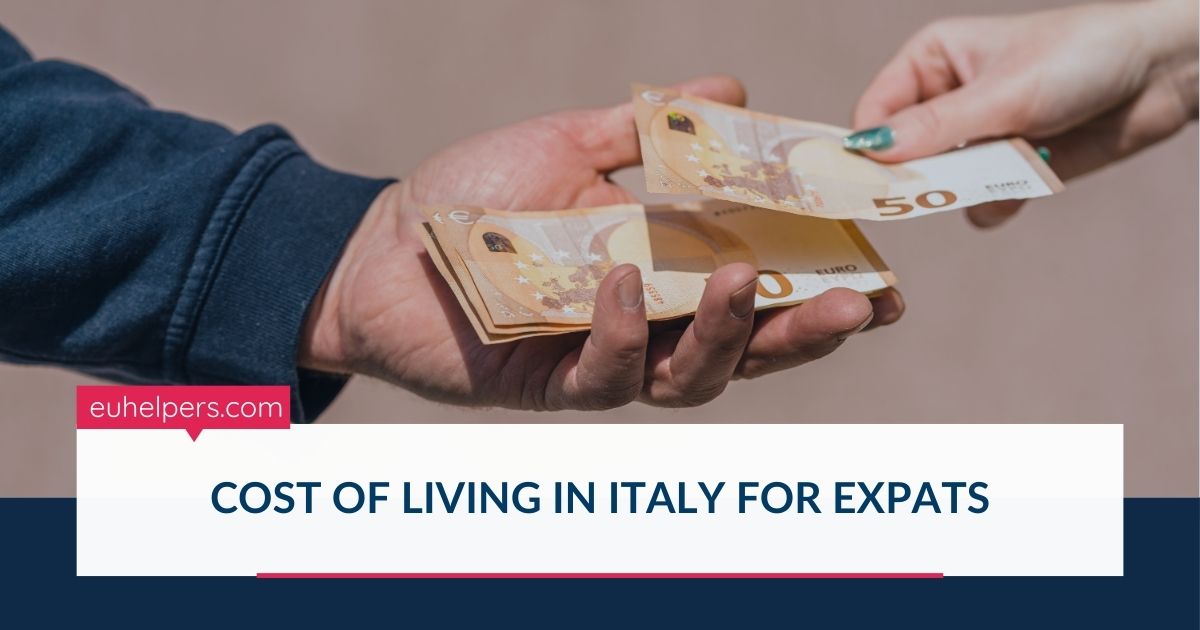
Italy offers a rich cultural experience, stunning landscapes, and world-renowned cuisine, making it a popular destination for expats, students, and travelers. However, the cost of living in Italy can vary significantly based on location, lifestyle, and individual needs. Here’s a detailed breakdown to help you understand the expenses involved.
1. General Cost of Living
For a single person, the average monthly cost of living in Italy ranges between €1,500 and €2,000, depending on the city and lifestyle. Families, on the other hand, typically require a budget of €2,500 to €3,500 per month.
On average:
- Single person: €1,310/month (including rent) or €656/month (excluding rent)
- Family of four: €3,214/month (including rent) or €2,049/month (excluding rent)
Breakdown of Expenses
- Food: €100–€200 per month
- Groceries: €400–€600 per month
- Transportation: €30–€50 per month
- Rent:
- Single occupancy: €300–€400 per month
- Shared occupancy: €200–€250 per month
- Utilities (internet, phone, TV, heat, electricity, water, gas): Around €804 per month
2. Student Living Costs
Italy is also a popular destination for international students, thanks to its renowned universities and relatively affordable education. Student living expenses typically range from €600 to €900 per month, covering accommodation, meals, transportation, and recreation.
The estimated annual cost of living for international students is approximately €8,400, which includes:
- Accommodation: €600 – €1,200
- Meals: €3,600
- Personal expenses: €3,600
3. City-Specific Costs
The cost of living varies significantly by city. Major cities like Milan and Rome are more expensive, while smaller cities offer a lower cost of living.
- Milan: €1,200 – €1,500 per month
- Rome: €1,000 – €1,300 per month
- Bologna: €800 – €1,100 per month
- Naples: €600 – €800 per month
Living in the City vs. Outskirts
Accommodation costs tend to be higher in city centers compared to suburban areas. Living in the outskirts can reduce rent and daily expenses but may require more spending on transportation.
4. Additional Considerations
When budgeting for life in Italy, consider factors such as:
- Seasonal fluctuations: Rent prices and general living costs may vary seasonally, particularly in tourist-heavy areas.
- Healthcare and insurance: Non-EU citizens may need to purchase private health insurance, which adds to their overall expenses.
- Lifestyle choices: Dining out frequently, traveling, or participating in recreational activities can significantly increase monthly costs.
The cost of living in Italy depends heavily on location and lifestyle. While larger cities come with higher expenses, smaller towns and suburban areas offer more affordable living. Whether you’re a student, expat, or traveler, understanding these expenses will help you budget effectively and make the most of your experience in Italy.
